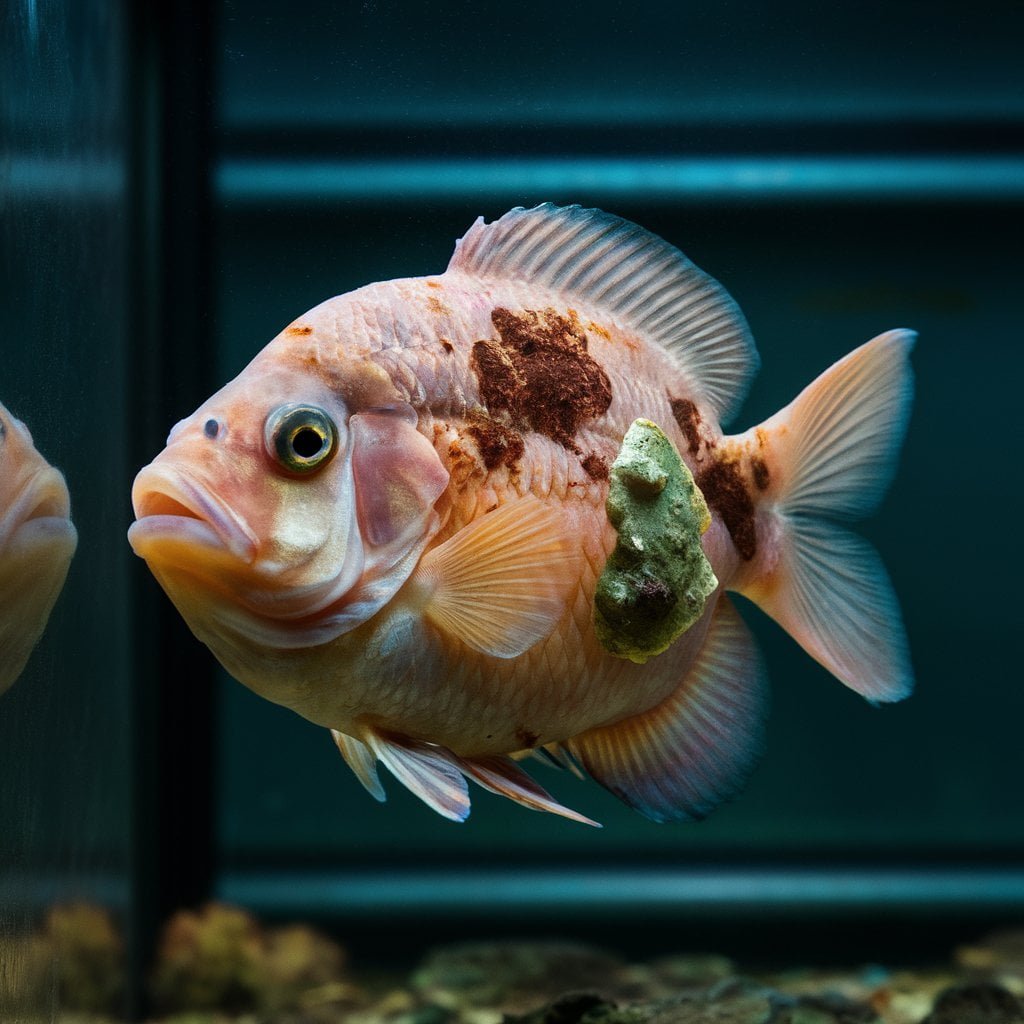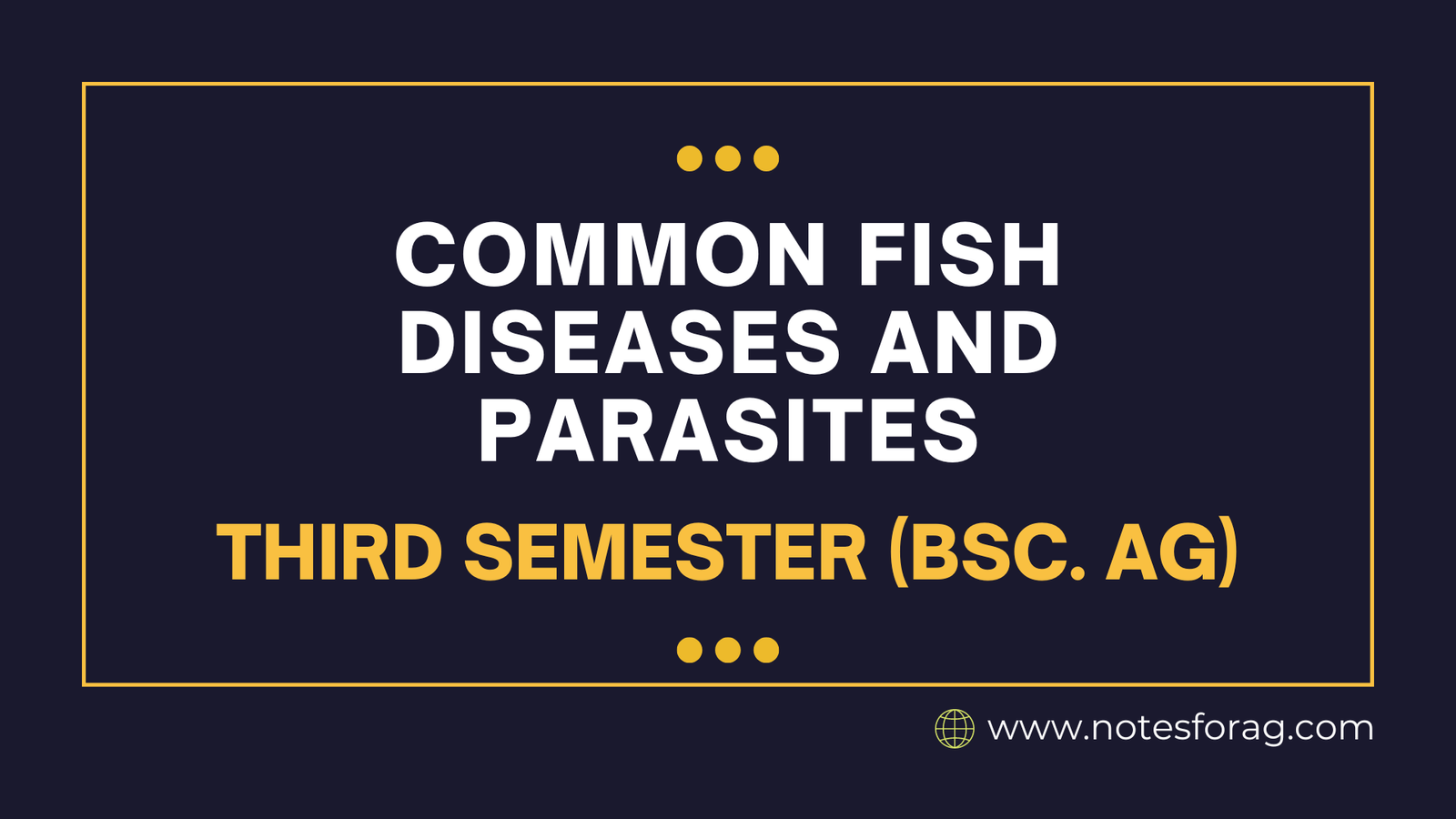Fish diseases and parasites are major challenges for both aquaculture and wild populations, affecting fish health and the economics. Common fish diseases include bacterial infections like columnaris and fin rot, viral infections like infectious hematopoietic necrosis (IHN), and fungal infections like saprolegniasis. Parasites, such as ich (Ichthyophthirius multifiliis), flukes, and fish lice (Argulus), can have serious health consequences. These conditions are frequently caused by poor water quality, overstocking, and malnutrition, hence effective management and biosecurity measures are critical for prevention and control.
Table of Contents
Introduction to Fish Health
Fish health is an important consideration for both hobbyist aquarists and commercial fisheries, affecting not only individual aquatic environments but also larger economic and ecological frameworks. Healthy fish populations are critical for preserving biodiversity, ensuring the sustainability of aquaculture, and supporting the livelihoods of those who rely on it. Diseases and parasites in fish can result in large economic losses, reducing the efficiency and productivity of commercial fishing and aquaculture operations.
From an ecological standpoint, fish population health is critical to the stability of aquatic ecosystems. Diseases can kill fish populations, causing a domino effect that alters food systems and habitats. For example, a drop in fish numbers can have an influence on predator species, and algae overgrowth caused by a lack of fish that normally keep algae in check might result in poor water quality. Thus, ensuring fish health entails not just keeping individual species but also protecting entire ecosystems.
Hobbyist aquarists may ensure the health of their fish by combining adequate tank maintenance, balanced nutrition, and regular monitoring for signs of sickness. Recognizing the basic differences between good and unhealthy fish is critical. Fish diseases can be identified by lethargy, loss of appetite, obvious sores or lesions, and odd swimming behavior such as erratic movements or seclusion from other fish.
Common Fish Diseases

Fish, like all living animals, are susceptible to a range of diseases, which can be generically classified as bacterial, viral, or fungal infections. Understanding these common fish diseases is critical to keeping a healthy aquatic environment.
One of the most frequent fish diseases is Ichthyophthirius multifiliis, also known as Ich or White Spot Disease. This parasitic illness can be identified by the presence of little white spots on the fish’s body, fins, and gills. Fish infected with Ich frequently show signs of distress, such as clawing against things, fast breathing, and lethargy. Poor water quality is the primary cause of Ich, as it permits the parasite to grow.
Fin Rot is another prevalent illness that affects fish, particularly those living in poor environmental circumstances. Fin Rot, caused by a variety of bacteria, deteriorates the fins and tail, often beginning at the edges and advancing to the base. Symptoms include ragged or discolored fins, and in severe cases, the fins look to be decaying. Fin Rot is often caused by stress, overcrowding, and poor water quality. To combat the infection, treatment includes increasing water quality, lowering stress causes, and administering antibacterial drugs.
By recognizing symptoms, understanding causes, and applying appropriate treatments, fish owners can drastically lessen the impact of these common fish diseases on their aquatic companions, resulting in a healthier and more vibrant aquarium environment.
Identifying Fish Parasites
Fish parasites are typically classified into two types: external parasites and internal parasites. External parasites, such as lice and leeches, are found on fish’s skin, fins, and gills. These parasites are frequently visible to the naked eye and can be detected by physical examination. Fish lice, for example, are tiny, flat, dark-colored insects that attach to the fish’s body. Leeches resemble little, elongated worms that adhere to the skin, causing discomfort and redness at the attachment points.
Internal parasites, such as worms and protozoa, live in the fish’s body and harm organs like the intestines, liver, and muscles. Identifying internal parasites typically necessitates studying behavioral changes and physical signs in the fish.
Internal parasite infections can cause weight loss, bloating, increased mucus production, and unpredictable swimming behavior. In extreme cases, internal parasites can be diagnosed by microscopic inspection of feces or tissue biopsies, which reveal the presence of parasitic eggs or larvae.
The life cycles of common fish parasites differ, although the majority entail numerous stages and hosts. Fish lice, for example, go through numerous phases of development, beginning with eggs that hatch into larvae and eventually mature into adult lice. These stages can spread in an aquatic environment via direct contact between infected and healthy fish, as well as by clinging to plants and substrates in the ecosystem.
Preventative Measures and Treatments
Maintaining a healthy aquatic habitat is essential for preventing fish illnesses and parasites. Proper tank management is the first line of defense, which involves frequent cleaning, water changes, and monitoring of water parameters including pH, ammonia, nitrite, and nitrate. Ensuring that the tank is not overcrowded and that the fish are not agitated is critical, since stress can weaken their immune systems and make them more susceptible to diseases and parasites.
Quarantine methods are essential for preventing disease transmission into your aquarium. New fish should be quarantined in a separate tank for at least two weeks before being placed into the main tank.
Water quality control is another critical component of preventing fish illnesses and parasites. To maintain optimal conditions, use a trustworthy water testing kit to check the water parameters on a regular basis and modify them as needed. A good filtration system is also required to remove trash and toxins from the water, lowering the risk of disease.
There are numerous therapy methods available. Medicated meals can help treat internal illnesses and parasites. Antiparasitic medicines and antibiotics are common treatments for external diseases and infestations. However, to avoid injuring the fish or upsetting the tank’s environment, use these treatments cautiously and according to the manufacturer’s directions.
Natural therapies, such as garlic or herbal extracts, can also help treat certain fish diseases and parasites. These cures are frequently kinder on fish and the environment, making them a popular choice among aquarists.
Early detection and response are critical in minimizing outbreaks of fish diseases and parasitoids. Monitor your fish for symptoms of sickness, such as changes in behavior, appearance, or appetite. Acting early at the first indication of trouble can increase the likelihood of successful treatment and recovery, assuring your aquatic pets’ long-term health and well-being.
Frequently Asked Question(FAQ)
What causes fish diseases?
Bacteria, viruses, fungus, and parasites are all possible causes of fish illnesses. Poor water quality, overcrowding, stress, inadequate feeding, and introducing new, untreated fish into a tank can all contribute to illness development and dissemination.
How can I prevent fish diseases?
Maintain high water quality by testing and cleaning your tank on a regular basis, avoiding overcrowding, feeding a balanced diet, quarantining new fish before introducing them into your main tank, and practicing good equipment hygiene.
Related Articles

